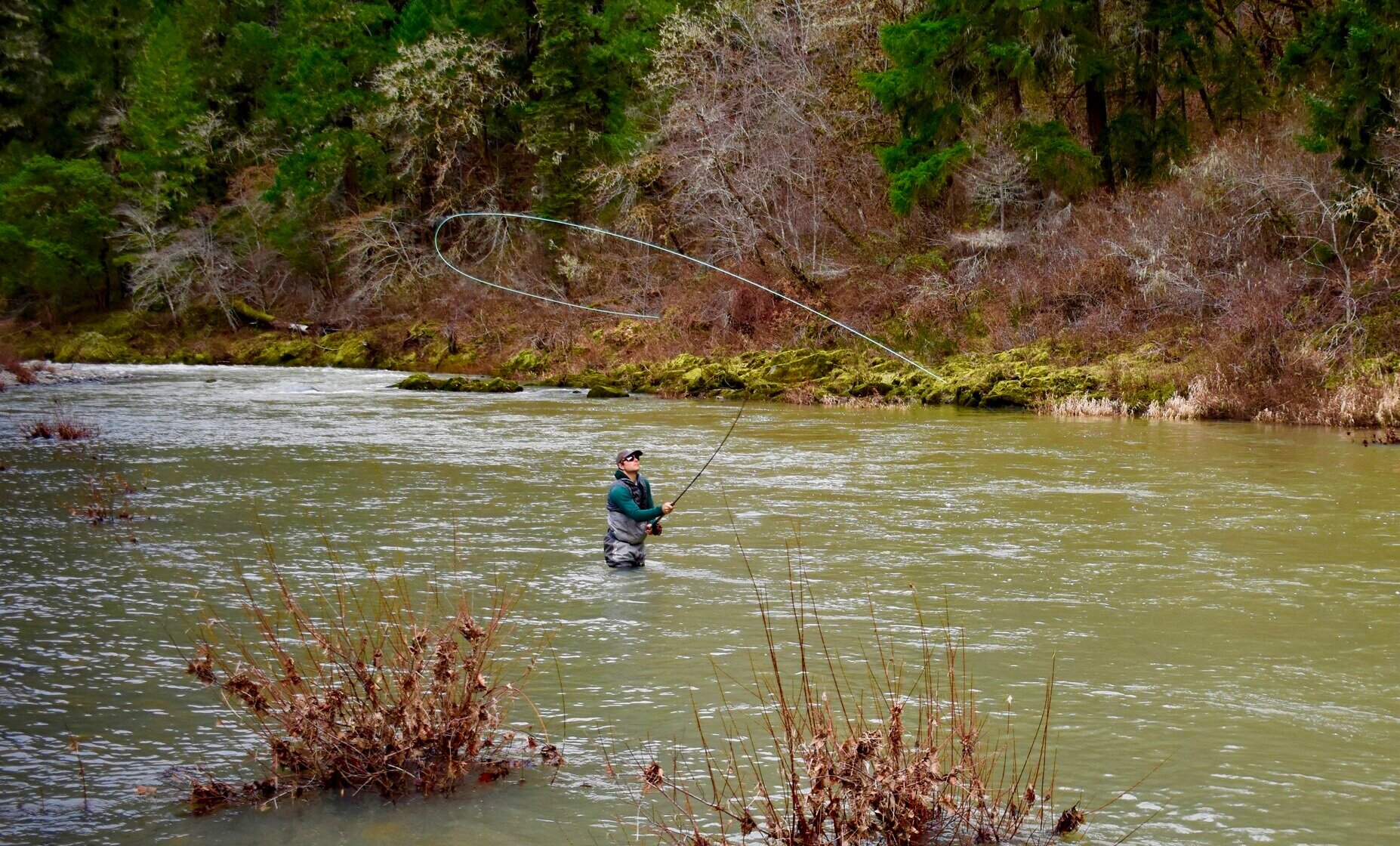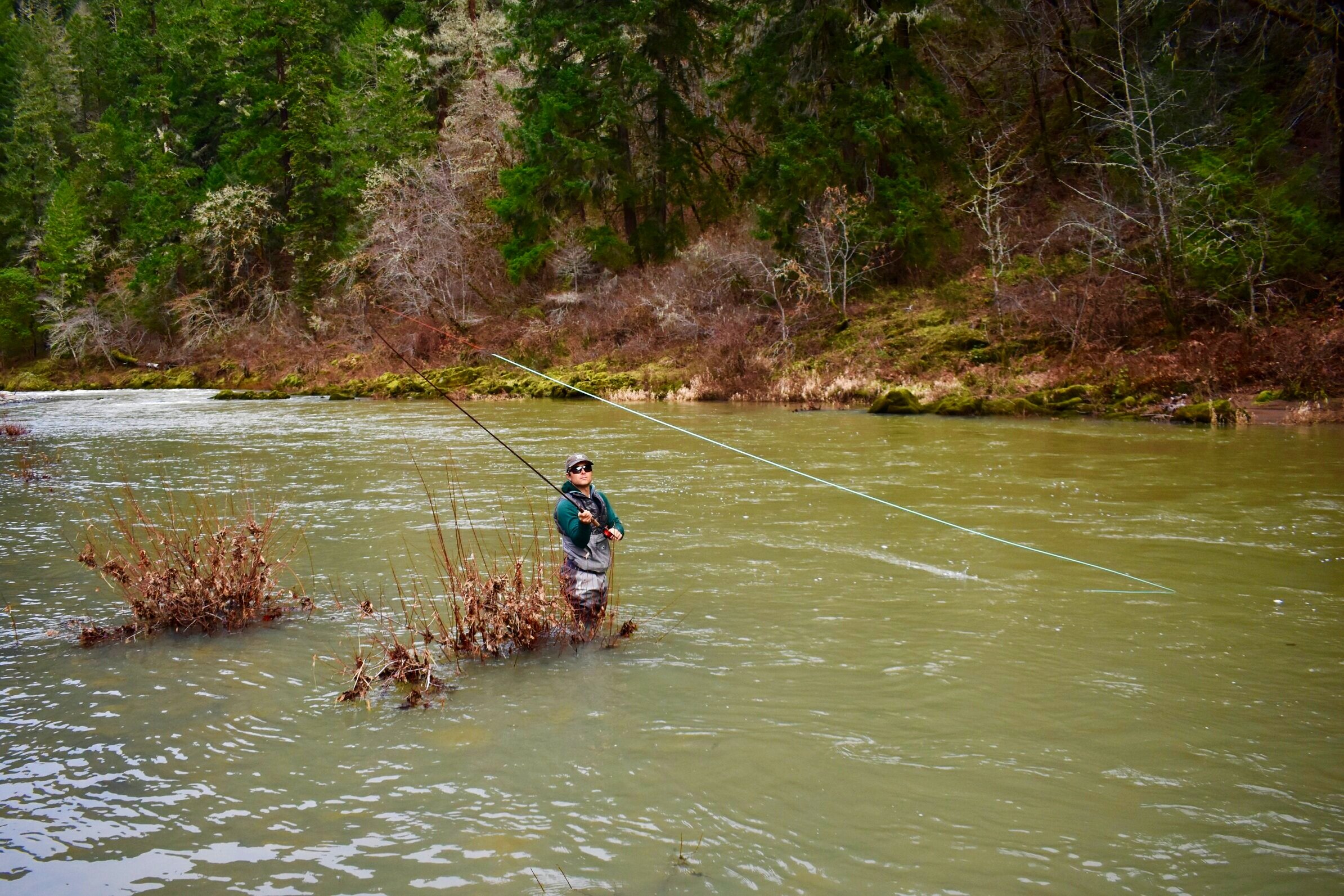Use your eyes for better spey casting
Many spey casting issues can be remedied with one simple fix and the use of a tool we all have, but don’t use often enough.
So when I’m guiding spey clients, where casting is a big component of the game, I try and distill casting down to its fundamental components, use a simple toolbox to fix problems, and ensure we can spend less time farting around casting, and more time actually fishing.
We know (or should know!) that good casting leads to more opportunities on the water, yet it’s still too easy to lose sight of our casting, which can lead to a whole host of issues, including blown anchors, speed and d-loop problems and trajectory mishaps.
So have you figured out what tool to use?
Yes, it’s, your eyeballs! And using them to watch what the heck is going on in your cast from start to finish is where every caster should begin to solve many of the casting problem they are having.
I see all too often, even from good anglers, poor casts are the product of a lack of observation throughout the casting stoke. They’ll set an anchor, form a d-loop, apply power to the forward stroke, and do it all blind, expecting a lazer-dart cast to fire off their rod tip into the abyss.
It works like that for some people, but not most of us, so here’s some simple ways to apply your eyeballs to your casting for better and more consistent results.
1) Watch your rod tip
Train your eyes here from the very beginning of your cast until the end. It might take a few tries to keep your eyes trained the whole time, so you can include the junction of your running line and shooting head too. The point is stay with your cast, all the way through, start to finish.
2) Open up your stance
If you are having trouble staying with your tip throughout the cast, try pointing your toes a little more downstream so your shoulders don’t get in the way and you are facing more of your d-loop. If your shoulder is getting in the way of watching your cast, you’re likely over rotating! Good casters look like they are hardly doing anything at all, and you should strive for that too.
3) Head Up
And keep your head on a swivel. In just about all spey casts, there are multiple directions involved, and you are going to have to move your head to stay with your cast and execute it. Allow your head to move as you cast, to follow your rod tip, observe your d-loop and pick a target for the forward cast. It will help your timing immensely, and even save a bad cast. By watching it all we’ll often catch the error mid stroke and can make a real time correction. Keeping your head on a swivel will also save you from annoying issues like catching your d-loop in the trees behind you. Why? Because you were watching it and saw it was about to go in there!
So watch your rod tip, open your eyes, and enjoy throwing some beautiful wedges out there!
Great fishing in the State of Jefferson
Rogue River Fly Only Fishing Report!
September is a magical time where there are few bad options or venues, and the hard part is choosing where to fish!
I am really looking forward to the Orvis Steelhead School at Morrisons Lodge this week as well as some other trips coming up including a hosted trip with Will Johnson at The Ashland Fly Shop and a few days down on the Klamath at The Scott River Lodge with Craig Neilsen of Shasta Trout. This Fall steelheading at its finest!
As I look into the month of October I am completely booked between the Rogue and Klamath Rivers. For those of you who missed your October opportunity, November is peak on one of my rivers and I still have some openings there. A wild and scenic river canyon, beautiful scenery and eager fish! 760-424-9682 or Worthingtonflyfishing@gmail.com








